Tomorrow, I host a monthly online meetup for paid subscribers, and we’ll have a Q&A with Buzz Burrell, whom I profiled earlier. If you’d like occasional bonus posts plus an invitation to the monthly Zoom, please upgrade your subscription to the supporter level.
Today’s essay has to do with running and the outdoors. But first, it’s about all our futures in the big-picture sense.
Last Saturday during a family trip to Bozeman, Montana, we went to the terrific Museum of the Rockies—an outing with the feel of a throwback to 20 years ago when my kids were little and we often visited natural history museums—and I stared at Sue, the most complete T. Rex fossil ever found and reconstructed (discovered in the 1990s by a female paleontologist, Sue Hendrickson, hence its name).
I thought about life 100 million years ago, extinction, and evolution and considered what we need to do not only to prevent species extinction but also to fight the potential extinction of our way of life—an end to what we were in fact doing, visiting a real-life museum as a family together, and reading and learning from actual three-dimensional exhibits physically in front of us, rather than experiencing some form of digital time travel virtually and solo through a device. If my kids have kids, will they still go to museums like this?
Extinction was on my mind because I had just read a thought-provoking essay by Ross Douthat with the ominous title, “The Age of Extinction is Coming. Here’s How to Survive” (gift link). Being someone with a survivalist streak, I couldn’t help read it even though it scared me. Thankfully, it turned out to be inspiring.
His essay makes the case that we’re at a critical time—a bottleneck—when rapid change to long-established norms happens, and we have to be intentional to preserve real-life practices rather than letting them disappear for digital substitutes. Things like inviting friends over to cook and share a meal, reading books, raising kids, and sending them to a public school that we as a society support. Or visiting a museum, and walking and talking together through it, rather than viewing a snippet of the display on YouTube by yourself in the bedroom you hardly ever leave. He writes:
“This isn’t just a normal churn where travel agencies go out of business or Netflix replaces the VCR. Everything that we take for granted is entering into the bottleneck. And for anything that you care about—from your nation to your worldview to your favorite art form to your family—the key challenge of the 21st century is making sure that it’s still there on the other side. …
In this environment, survival will depend on intentionality and intensity. Any aspect of human culture that people assume gets transmitted automatically, without too much conscious deliberation, is what online slang calls NGMI—not going to make it. Languages will disappear, churches will perish, political ideas will evanesce, art forms will vanish, the capacity to read and write and figure mathematically will wither, and the reproduction of the species will fail—except among people who are deliberate and self-conscious and a little bit fanatical about ensuring that the things they love are carried forward. … And while this description may sound like pessimism, it’s intended as an exhortation, a call to recognize what’s happening and resist it, to fight for a future where human things and human beings survive and flourish. [emphasis added] It’s an appeal for intentionality against drift, for purpose against passivity—and ultimately for life itself against extinction.”
What this has to do with running and the great outdoors
In the museum, we felt as if we time-traveled from the Mesozoic Era to the 19th century when we walked from the dinosaur room into a separate exhibit celebrating Yellowstone Park, “America’s Best Idea,” the original national park and the one closest to Bozeman.
Sadly, as if with prescience, the information and photos were mounted on yellow-toned displays that suggested the yellowing or fading of this idea—of protecting the national treasures of national parks.
It happens to be National Park Week, and yesterday was Earth Day on top of that—a time when we’re reminded to visit and celebrate national parks and other public lands, and reflect on and renew our commitment to environmental stewardship—and yet rapidly, in a period of weeks, the current leadership has gutted support for national parks’ operation and maintenance. Last week, Interior Secretary Doug Burgum put a former oil exec and unaccountable minion of Musk’s DOGE in charge of making sweeping changes and reductions in the Interior Department (Washington Post story, gift link), which includes management of national parks and the BLM’s public lands.
Until recently, our country appreciated and supported national parks, as this museum display conveys; conservation was a nonpartisan issue:
If you’re reading this, chances are you’re a trail runner or hiker, maybe you fish or hunt too, and maybe you have kids and want your kids to have clean air to breathe and wild open spaces to roam and even, especially, a still-livable climate not wrecked by overheating, drought, and wildfires, with biodiversity to prevent the collapse of ecosystems. For all these reasons, public lands matter.
And if we want to preserve them for balanced use—prioritizing conservation and restoration along with grazing, mining, drilling, and other uses—then we can’t take them for granted. We have to show up for them. Otherwise, as that extinction essay above warns, they're not gonna make it. The new administration is rapidly moving toward selling off some public lands, reducing stewardship and protection of them, and rescinding the Public Lands Rule so that conservation is no longer on equal footing with other land uses such as energy development.
I’m not talking only about national parks—the best-known and most-visited wilderness spaces—but also the more wild federal public lands managed by the Bureau of Land Management and US Forest Service.
In a great article by National Parks Traveler, called “It’s National Park Week: What can you do?” the writer encourages all of us to get out and visit, appreciate, and share what’s happening not just at national parks but also national monuments and other public lands. In other words, don’t stay home because you’re worried about long lines, unmaintained toilets, and closed campgrounds from reduced staffing—go there, witness the landscape, and share the message of what’s at stake when our leaders decide not to care for these national outdoor treasures anymore.
“We need the American people to use their public lands. … We need the American people to not be afraid to get out there. We need the American people to show up and swarm their national parks and their national monuments and their national forests to show the value that these lands have,” said a recently fired U.S. Forest Service wilderness ranger.
Said another advocate in that article: “As things fail, we need to continue to highlight that and call it out. So when there are long lines, when there are unfortunate safety concerns and incidents, they have to be highlighted. We have to keep talking about it and make noise about why cuts to the workforce, why loss of public lands, why this is dangerous, why it's bad for the American people, why it's bad for local economies.”
With that in mind, I’m planning a day trip to a nearby national monument that I’ve always meant to visit but for whatever reason never bothered, the Canyon of the Ancients, and another day trip to explore trails on the national conservation area McInnis Canyon. Now’s the time; use it or lose it. I’ll share what I see there.
I have visited and loved so many national parks, including Grand Canyon, Yosemite, Mesa Verde, Acadia, Arches, Pinnacles, Black Canyon—and if they suffer neglect, then within a generation they could become a relic no longer valued by a new generation and thus not a national priority. Visiting parks could become an old-fashioned pastime like going to live theater or museums, and public lands could be increasingly carved up by roads and pipelines that accelerate fossil fuel usage and disrupt wildlife migration and habitat. That’s not the world I’d want for future grandkids.
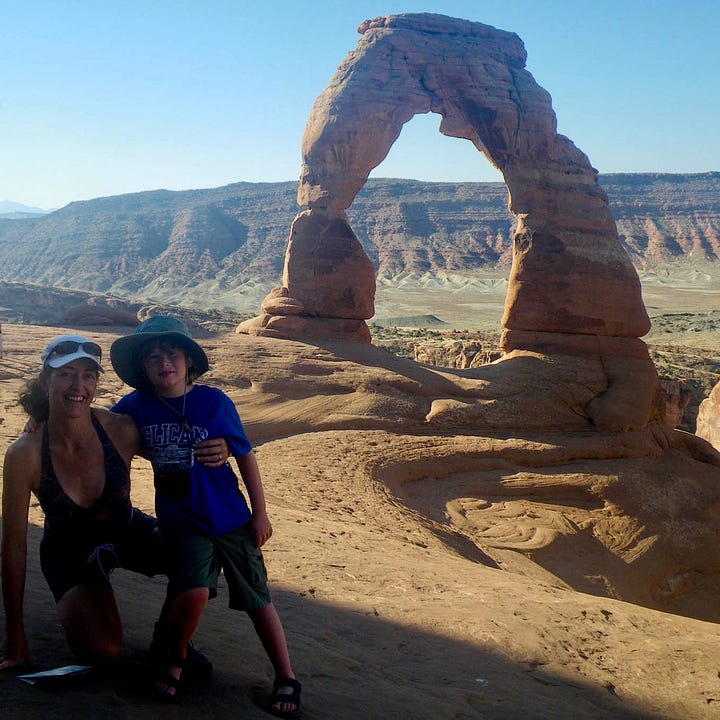

I also care for public lands as an advocate for the Conservation Lands Foundation, a nonprofit dedicated to protecting more of the 250 million acres of public lands managed by the Bureau of Land Management. I hope you’ll visit their website to sign up for their news alerts and consider donating. Also explore their page on the National Conservation Lands for inspiration on places to visit and trails to run.
Finally, I want to mention something that makes me proud—and shows that action at the local or regional level can have a ripple effect. Two weeks ago, I noticed that neighboring La Plata County (where Durango is) became the first Colorado county to pass a resolution supporting public lands and urging that they not be sold. (I found this out thanks to following @westernwatergirl on Instagram.) I got a copy of the resolution and shared it with our county commissioners here in San Miguel County and asked them to take a similar step. Wouldn’t it be something, I said, if all the counties in our congressman’s district passed a similar resolution, thus pushing back against the congressman’s support of the Trump administration’s anti-environmental Interior Department?
The three county commissioners agreed with my suggestion. They put it on the agenda for their meeting yesterday and drafted a resolution similar to La Plata County’s. They also drafted a letter to the congressman, Jeff Hurd, detailing their objections to his proposed “Productive Public Lands Act.” I Zoomed into the commissioners’ meeting and thanked them for their action and made some suggestions on the wording. While my individual messages to Hurd might get zero attention, the official action of a county in his district should at least prompt some news and consideration in our purple district.
I mention this because I know you know to call or email your U.S. senators and congressperson, but don’t overlook the potential power of advocating to your town or county, encouraging the municipality to communicate to higher-up reps in the form of letters and resolutions.
Bozeman bits and tips
I started off by mentioning that we took a family trip to Bozeman, where my son is finishing a 12-week program at Montana State University’s Farrier School. I had never been there and really enjoyed it, though I can guess from the amount of new development and high-end stores that it has changed rapidly in the last one to two decades, which surely has been painful for old-timers who don’t want their quiet, affordable lifestyle to go the way of Jackson Hole or Aspen, the way I get nostalgic about the dirt side streets, empty lots, and funkiness of Telluride’s recent past.
This excellent New Yorker article, “The Decline of Outside Magazine Is Also The End of a Vision of the Mountain West,” makes reference to Bozeman and the changing character of mountain towns: “Speaking with former Outside staffers, I got the sense that their anger was, at least to some extent, a cover for dismay at a more diffuse and painful set of losses, as tech and finance have encroached on the Mountain West: the ski resorts bought up by private equity; the dirtbag climbers priced out of small towns; Bozeman, of all places, becoming the next tech hot spot.”
I’m glad our trip was rooted in visiting a part of the state university’s animal sciences school that trains students for a career working with horses and with their hands. Here’s a shot of my son in his “classroom,” where he has learned the craft of blacksmithing along with equine anatomy and biomechanics to properly trim and shoe horse hooves.
If you find yourself in Bozeman, here are a few things I recommend:
Visit and support the local independent running store on Main Street, Bozeman Running Co. I make a point when I travel of seeking out local running shops and buying a shirt with their logo, which I did here—a high-quality shirt by rabbit—and also bought my daughter new Hokas. Shop local!
Go for a run or hike around downtown on the paths connecting Lindley Park and Burke Park. Even better, head out of town a couple of miles to the College M trailhead to trek to the top. I went up the steep way (a half mile) and ran down the easy way (1.5 miles). For a longer run, add on a loop around the Drinking Horse Mountain trails, across the road from the College M hill, and/or some miles on the bike path.
We had two good dinners out at restaurants I recommend: Brigade and Blackbird. I also recommend the hotel we stayed at, The Armory, and their restaurant, Fieldings.
And don’t miss the Museum of the Rockies, which I linked to at the top.
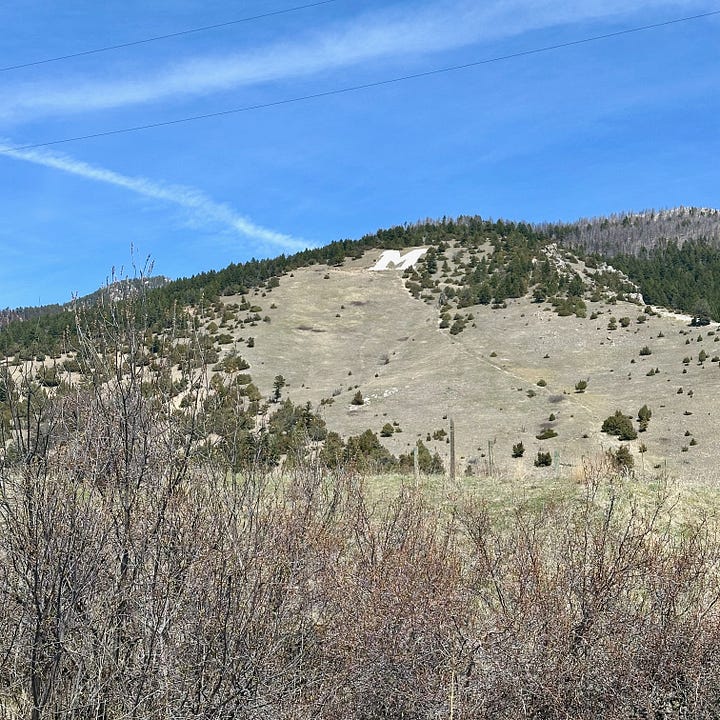

I looked for a book set in Montana to read while there and devoured this novel: The Entire Sky by Joe Wilkins. It is beautifully written and depicts a ranching family coping with loss and change, and an adolescent on the run who unexpectedly enters their lives. You can read my five-star mini review on Goodreads here.
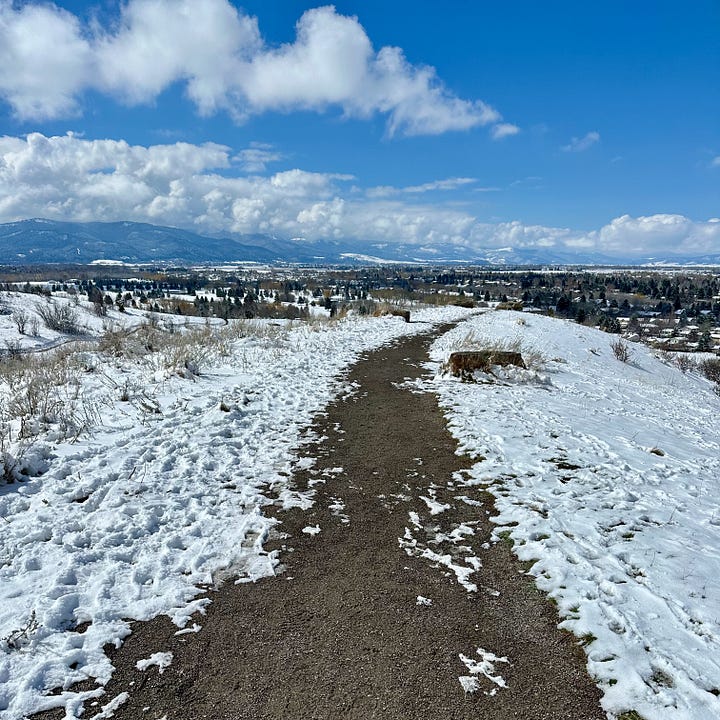
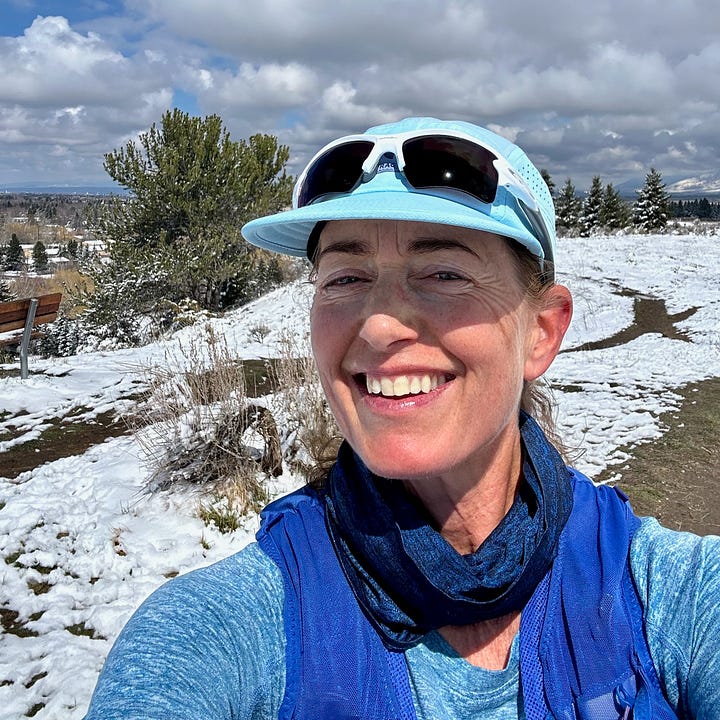
Thanks for reading! And, I want to publicly thank
who profiled me on his newsletter last week. If you’re a new subscriber here and curious about my background, Craig covered it pretty well:If you’d like to support this newsletter but would rather not commit to a paid subscription, please consider a small donation to my virtual tip jar:

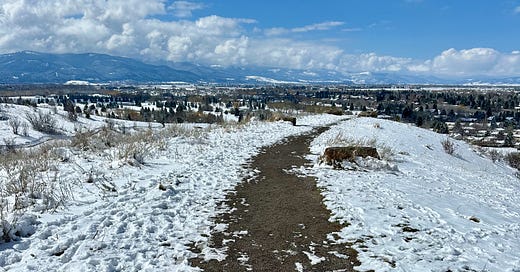


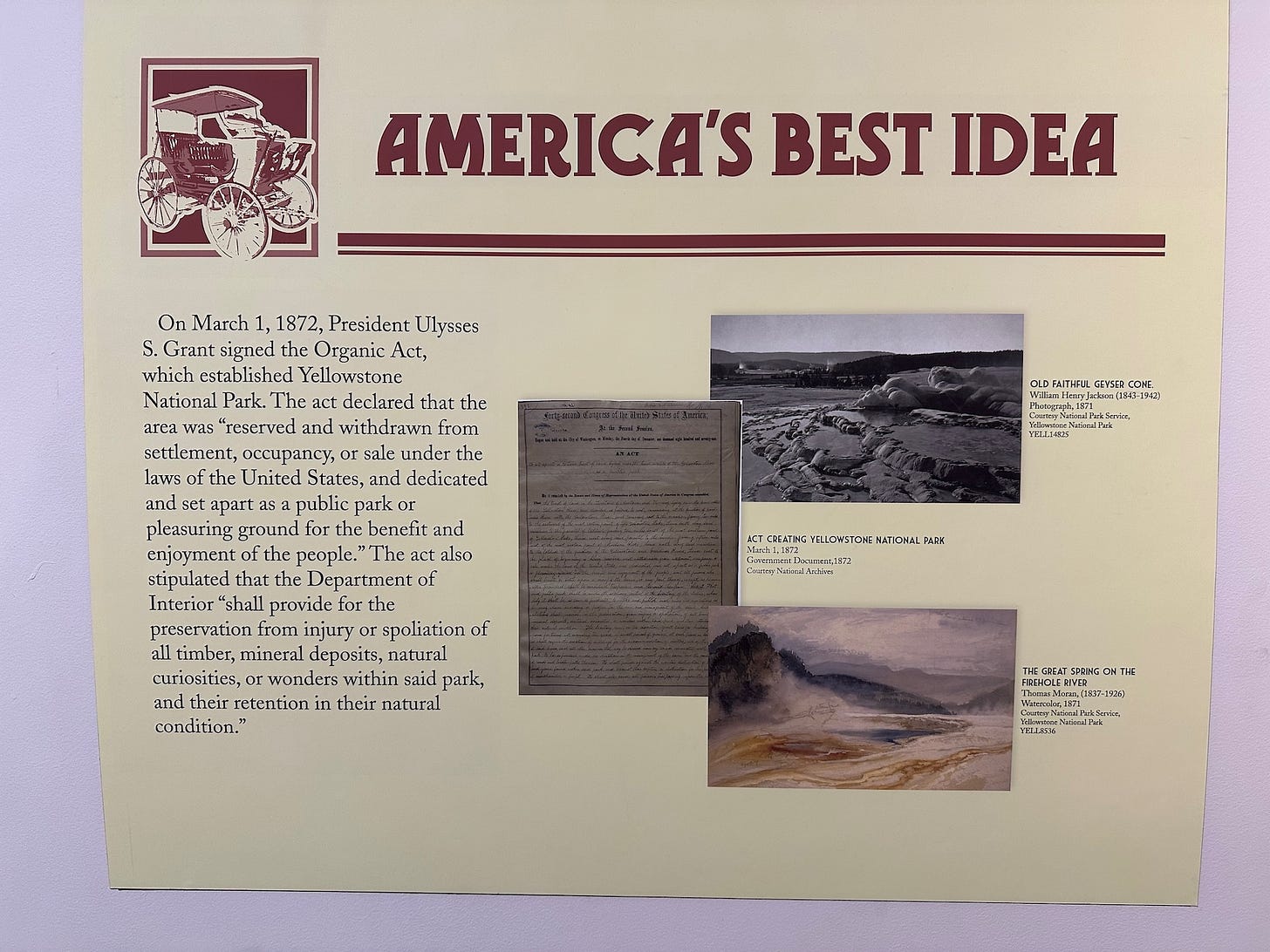
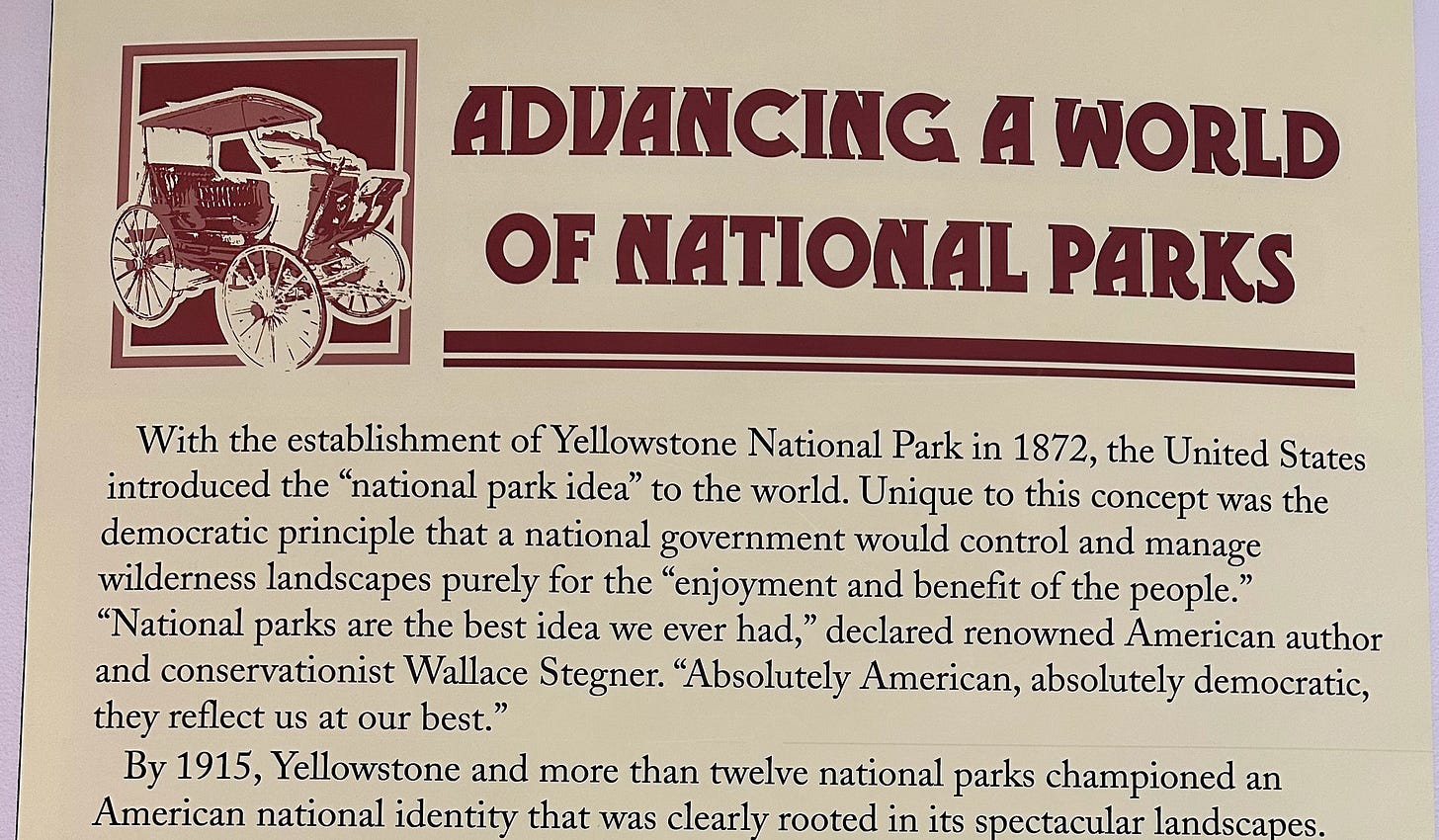


Thanks for your public lands advocacy Sarah. In 30 years of work in the Conservation NGO world, we've never seen anything close to this. It is definitely an all hands on deck moment for any of us who care about and use public lands...I suspect that is just about 100% of the people that read your Substack. Today, Jen and I are calling our two Colorado Senators to voice our concern over the DOGE take-over of the Department of Interior. You reference this above (thank you!). I think this piece does a good job of providing some details - https://wessiler.substack.com/p/doge-just-took-over-national-parks And despite the title, this won't just impact the National Park Service, but BLM, USFWS, BIA and USGS among other agencies.
Sad but true I feel like I’m watching a train crash that I’m unable to stop. Holding out hope for libraries and museums and mud covered hikes and trail rides and runs. Bozeman is definitely on my list of places. I’m in New Hampshire right now. Ran the Revel in the rain yesterday. It seems on the east coast the further north you go the more nature based the people. Maybe just my imagination but in my town there are definitely more people in their pajamas and slippers at the 7/11, than on any trail which makes me so sad where as here I have been sharing the trail paths with all shapes, sizes, ages which gives me some hope. Catching up on my emails on my post race buffer day🤣